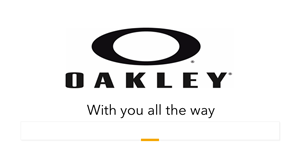Saro Hartounian of Harco Incentives
Harco’s CEO talks about product and program trends, inventory innovation and the trouble with brand exclusivity
By Ira Ozer
Saro Hartounian, founder and CEO of Harco Incentives, has been in the incentive industry for more than 35 years and, unlike most CEOs of $100 million+ distributorships who focus on running their business at a macro level, Saro is a merchandising expert who understands the key trends in the industry and focuses on the details to design and fulfill compelling programs. We recently had the opportunity to interview Saro soon after he returned from the2015 Consumer Electronics Show in Las Vegas. Here he shares some of his thoughts about award merchandising and the incentive industry:
R+RN: What were some of the hot new items at this year’s CES?
Hartounian: Last year, at CES 2014, the buzzword was the “internet of things” which referred to connected devices that were becoming increasingly thinner, faster, lighter, smarter and even cheaper. The big difference at CES 2015 was the focus on the “connected home.” Google bought NEST, which integrates with smart apps and devices to control home security, lighting, temperature, sprinklers, garage and many other functions within the home. Google made a big presentation about this idea of creating more “humane” devices that are less “gadgety.” Smart watches will be a huge category in 2015, especially with the introduction from Apple. There was also a huge emphasis on wellness products, which encompassed the entire Sands convention center. These products are all centered around how we can be more healthy as individuals, families, companies and even communities. A wide range of smart watches and other electronics were on display, from FitBits and other activity trackers to all kinds of exercise equipment and related gear and apparel. Activity trackers are relevant for everyone, not just athletes, because they measure and report on the quality of movement, not just how many steps were taken.
R+RN: So how does wellness fit into the incentive industry?
Hartounian: Almost all companies today have an interest in running wellness programs to encourage employees to get medical assessments, follow the recommendations of their doctors, eat more healthfully, exercise and rest regularly. The obvious business case is that these programs can help companies reduce their insurance premiums and, secondarily, people who are well and fit are usually happier, feel better and are more productive. Like any other program, incentives and recognition must be offered or the participants won’t take the necessary “painful” actions to change their behavior. Merchandising for these programs can include most of the “gear” that the employee-athletes desire and need to participate, and not necessarily the broad range of thousands of items that appear in a typical incentive program.
R+RN: How many products does Harco inventory?
Hartounian: Harco carries thousands of products from hundreds of brands, and we turn our inventory frequently to provide the latest models and best pricing in incentive programs. Since the earning power of most incentive program participants is less than $500 in award value, we find that keeping 3,000-4,000 of the most popular items in stock ensures timely delivery and participant satisfaction. In addition to the brands Harco inventories in our warehouse in Englewood, NJ, we were the first incentive distributor to integrate with the Universal Rewards XChange, which allows incentive agencies access to almost one million products, including digital media, and Harco also integrates with ShipQuick from RepLink, another prominent industry exchange.
R+RN: What trends have you seen in incentive merchandise distribution during the past few years?
Hartounian: At the same time that more choice is being offered in the industry, there has been a consolidation of incentive distributors by the brands, so of the 50 or more that were in business in the 1990s, there are fewer than 15 today, but with more lines. Overall, this has been a good thing for all concerned, because it provides better choice, availability and pricing. But in some cases there has been a negative effect, like when new brands enter the market and are promised that they will have maximum sales impact by signing an exclusive deal with one distributor. When this happens, the opposite is often true, because either the other distributors won’t carry the line or when they do, because the products are unique or in-demand, once they add their markup on the markup of the first distributor the product becomes over-priced. GoPro is just one recent example of this.
R+RN: What should brands do to maximize their sales in the incentive industry?
Hartounian: In addition to making their products available to all qualified distributors without providing monopolistic price advantages to just one, they should realize that the incentive industry provides free advertising exposure of their brand to program participants, who are top achievers and valuable customers, well in advance of their ultimate purchase. Brands should provide early access to new products in our industry so that we can include them in programs, as well as plenty of inventory to support fulfillment as needed. The incentive industry is a leading indicator of their products success and a source of incremental business.
















